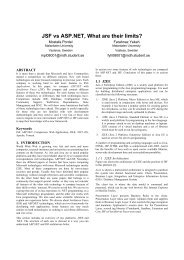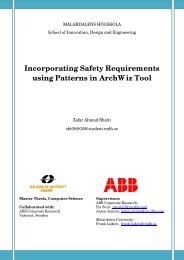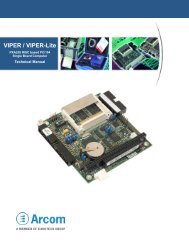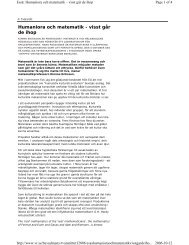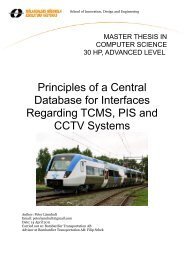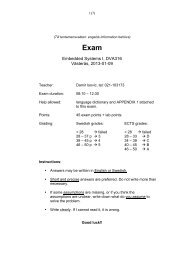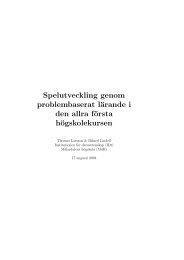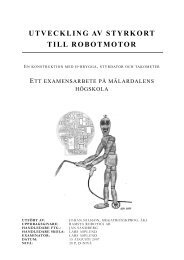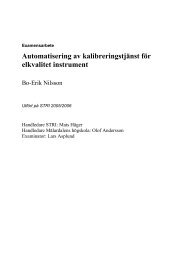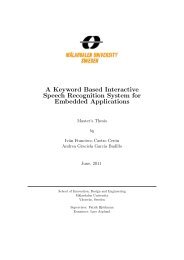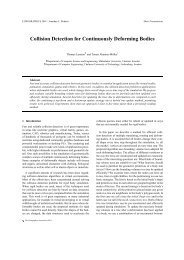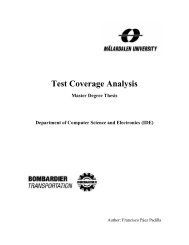UML PROFILE FOR SAVECCM - Research
UML PROFILE FOR SAVECCM - Research
UML PROFILE FOR SAVECCM - Research
Create successful ePaper yourself
Turn your PDF publications into a flip-book with our unique Google optimized e-Paper software.
Component models<br />
Components in .NET are called Assemblies. Assembly consists of compiled<br />
classes and a manifest file which is a component descriptor and contains all<br />
published data types and dependencies. Manifest file holds definitions of<br />
provisions of .NET components, while requirements are not explicitly defined, they<br />
must be obtained programmatically from a source code.<br />
The .NET model is not hierarchical and composition of components is not<br />
supported. It may be achieved only explicitly from a source code.<br />
3.3.3 Enterprise JavaBeans<br />
Enterprise JavaBeans (EJB) is a component model developed by Sun<br />
Microsystems with current version 3.0 [SunEJB 05]. EJB has quite limited scope<br />
but despite its limitations, it has been widely used and popular in Java community.<br />
EJB is primarily used for a client – server model of distributed computing. EJB<br />
components are limited to Java programming language, but they may be invoked<br />
from various other languages e.g. C++, C#, Visual Basic .NET.<br />
EJB specification introduces three kinds of components called beans: Entity<br />
beans, Session beans and Message – driven beans. Communication between<br />
beans or between client and a bean is performed using Remote Method<br />
Invocation, which is a Java implementation of a Remote Procedure Call.<br />
• Entity bean: its purpose is to access to data remotely over network. Each<br />
entity bean represents an object view on one record from the database<br />
and is defined by primary key. They may be shared between multiple<br />
users that use a primary key to access a particular bean. Invocations are<br />
performed synchronously. Entity beans are statefull due to permanent<br />
storage background.<br />
• Session beans: an opposite to entry beans, they are not permanent and<br />
have no primary key since they are not backed by a database or other<br />
form of permanent storage. Session beans are not shareable.<br />
Invocations of session beans are synchronous. Session beans may be<br />
statefull or stateless. Statefull bean maintains its state across different<br />
method calls. It is intended to be used by one remote client at a time.<br />
Stateless bean does not hold its state and it may be used by more than<br />
one remote client at a time.<br />
• Message – driven beans: as session beans, do not represent any data<br />
directly, however they may access any data in an underlying database.<br />
They are executed when a message from a client arrives on a server.<br />
This means that their invocation in asynchronous.<br />
The interface of a bean is a set of owning ports. Beans expose two kinds of<br />
interfaces:<br />
15



